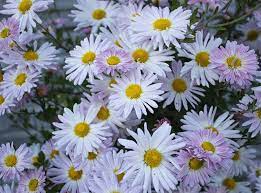**The Medicinal Uses of Chrysanthemum Flowers**

Chrysanthemum flowers, known for their beauty and distinctive aroma, have been utilized for centuries in traditional medicine for their therapeutic properties and health benefits. From promoting relaxation to supporting immune function, chrysanthemum flowers offer a range of medicinal applications that have been valued in various cultures worldwide. Let’s delve into the fascinating world of the medicinal uses of chrysanthemum flowers, exploring their historical context, modern applications, and potential health benefits.
**1. Traditional Uses in Herbal Medicine**
Chrysanthemum flowers have a long history of use in traditional Chinese medicine (TCM), where they are known as “Ju Hua” or “Chrysanthemum morifolium.” In TCM, chrysanthemum flowers are valued for their cooling properties and are believed to have a calming effect on the body. They are commonly used to clear heat, dispel wind-heat, and soothe the liver.
In traditional herbal formulas, chrysanthemum flowers are often combined with other herbs to create therapeutic teas, tinctures, or poultices. These preparations are used to treat conditions such as headaches, fever, eye disorders, hypertension, and respiratory ailments.
**2. Health Benefits and Modern Research**
Modern scientific studies have begun to explore the potential health benefits of chrysanthemum flowers, validating some of their traditional uses:
– **Anti-inflammatory Properties**: Chrysanthemum flowers contain compounds with anti-inflammatory effects, which may help reduce inflammation in conditions like arthritis and respiratory disorders.
– **Antioxidant Activity**: Chrysanthemum flowers are rich in antioxidants, including flavonoids and phenolic compounds, which can help neutralize free radicals and protect against oxidative stress.
– **Eye Health**: Chrysanthemum tea is often consumed to support eye health and relieve eye strain. It is believed to help nourish the eyes and improve vision.
– **Liver Support**: In traditional medicine, chrysanthemum is used to support liver function and detoxification. Modern research suggests that chrysanthemum extract may have hepatoprotective properties.
– **Stress Relief and Relaxation**: Chrysanthemum tea is prized for its calming effects and is often consumed to promote relaxation, reduce stress, and improve sleep quality.
**3. Common Forms of Administration**
Chrysanthemum flowers are typically prepared and administered in the following forms:
– **Chrysanthemum Tea**: Chrysanthemum tea is made by steeping dried chrysanthemum flowers in hot water. It is consumed as a refreshing beverage and is believed to have cooling and calming properties.
– **Herbal Extracts**: Chrysanthemum extract is available in liquid or capsule form, providing a concentrated dose of the flower’s active compounds.
– **Topical Applications**: Chrysanthemum extract may be used topically in creams or ointments to soothe skin irritation or inflammation.
– **Combined Formulations**: Chrysanthemum is often included in multi-herb formulations or dietary supplements designed to support specific health goals.
**4. Safety and Precautions**
While chrysanthemum flowers are generally considered safe for most people when consumed in moderation, it’s essential to exercise caution, especially for those with allergies to other plants in the Asteraceae family (such as ragweed or marigolds). Pregnant or breastfeeding women should consult a healthcare professional before using chrysanthemum products.
**5. Cultural Significance**
Beyond its medicinal uses, chrysanthemum holds cultural significance in many Asian societies:
– In China and Japan, chrysanthemum flowers symbolize longevity, nobility, and purity. They are often featured in art, literature, and ceremonial traditions.
– Chrysanthemum festivals are held annually to celebrate the flower’s beauty and cultural heritage, showcasing different varieties and arrangements.
**Conclusion**
Chrysanthemum flowers have a rich history as a medicinal herb, valued for their therapeutic properties and health benefits. Whether enjoyed as a soothing tea, incorporated into herbal remedies, or admired for their cultural symbolism, chrysanthemum continues to be a beloved botanical with a legacy rooted in wellness and tradition. As scientific research advances, we gain a deeper understanding of the potential health-promoting properties of chrysanthemum flowers, reaffirming their place in both traditional and modern approaches to holistic health and well-being.
**Medical Benefits of Chrysanthemum Flowers**
Chrysanthemum flowers, renowned for their beauty and aromatic qualities, offer a spectrum of health benefits and medicinal uses that have been appreciated for centuries. From promoting relaxation to supporting immune function, the therapeutic properties of chrysanthemum extend across traditional and modern medical practices. Let’s explore in depth the diverse medical benefits and applications of chrysanthemum flowers, encompassing their historical significance, scientific research, and practical uses in holistic health.
**1. Traditional Uses in Herbal Medicine**
Chrysanthemum flowers have a prominent place in traditional herbal medicine systems, particularly in Chinese and East Asian traditions. In these systems, chrysanthemum (Chrysanthemum morifolium) is known as “Ju Hua” and is revered for its cooling properties and ability to dispel heat from the body. The flower has been historically used to treat various ailments, including:
– **Fever and Inflammation**: Chrysanthemum tea is commonly consumed to reduce fever and alleviate symptoms of inflammation, such as headaches and sore throat.
– **Eye Health**: Chrysanthemum is believed to nourish the eyes and improve vision. It is often used to relieve eye strain and reduce discomfort associated with prolonged screen time.
– **Respiratory Conditions**: In traditional herbal formulas, chrysanthemum is included to clear heat from the lungs and alleviate symptoms of respiratory infections, such as cough and congestion.
– **Liver Support**: Chrysanthemum is used to support liver function and detoxification, making it a valuable herb for promoting overall liver health.
**2. Modern Scientific Research**
Recent scientific studies have begun to validate the traditional uses of chrysanthemum flowers and explore their potential therapeutic applications:
– **Antioxidant Properties**: Chrysanthemum flowers are rich in antioxidants, such as flavonoids and phenolic compounds, which help combat oxidative stress and reduce the risk of chronic diseases.
– **Anti-inflammatory Effects**: Compounds found in chrysanthemum exhibit anti-inflammatory properties, which may benefit individuals with inflammatory conditions like arthritis and asthma.
– **Eye Protection**: Research suggests that chrysanthemum extract may help protect against age-related eye diseases by reducing oxidative damage and inflammation in the eyes.
– **Anxiolytic and Sedative Effects**: Chrysanthemum tea is known for its calming effects and is used to promote relaxation, reduce anxiety, and improve sleep quality.
– **Antimicrobial Activity**: Chrysanthemum extracts have shown antimicrobial properties against a range of bacteria and fungi, suggesting potential applications in the treatment of infectious diseases.
**3. Common Forms of Administration**
Chrysanthemum flowers are consumed in various forms to harness their health benefits:
– **Chrysanthemum Tea**: The most common method of consumption is brewing dried chrysanthemum flowers to make a fragrant and soothing tea. Chrysanthemum tea is enjoyed for its refreshing taste and therapeutic effects on the body and mind.
– **Herbal Extracts**: Chrysanthemum extracts are available in liquid, capsule, or tablet form, providing a concentrated dose of bioactive compounds for targeted health benefits.
– **Topical Applications**: Chrysanthemum extracts may be used topically in creams or ointments to soothe skin irritation, reduce inflammation, or promote wound healing.
– **Combined Formulations**: Chrysanthemum is often combined with other herbs in traditional herbal formulas or dietary supplements to enhance its therapeutic effects and address specific health concerns.
**4. Safety and Considerations**
Chrysanthemum flowers are generally safe for most people when consumed in moderate amounts. However, individuals with allergies to other plants in the Asteraceae family (such as ragweed or daisies) may experience allergic reactions to chrysanthemum. Pregnant or breastfeeding women should consult with a healthcare provider before using chrysanthemum products.
**5. Integrative Medicine and Wellness Practices**
In integrative medicine and wellness practices, chrysanthemum flowers are valued for their holistic approach to health and well-being. They are often incorporated into mindfulness rituals, meditation practices, and holistic healing modalities to promote relaxation, reduce stress, and support overall vitality.
**6. Cultural Significance and Appreciation**
Beyond their medicinal uses, chrysanthemum flowers hold cultural significance in many societies:
– In China and Japan, chrysanthemums symbolize longevity, nobility, and purity. They are featured in art, literature, and ceremonial traditions, such as the Chrysanthemum Festival.
– Chrysanthemum festivals are held annually in various countries to celebrate the beauty and cultural heritage of these flowers, showcasing different varieties and arrangements.
**Conclusion**
Chrysanthemum flowers represent a harmonious blend of beauty and therapeutic efficacy, offering a treasure trove of health benefits rooted in tradition and validated by modern science. Whether enjoyed as a soothing tea, incorporated into herbal remedies, or admired for their cultural symbolism, chrysanthemum continues to be a beloved botanical that embodies the art of healing and the richness of cultural heritage. As scientific research advances, our appreciation for the medicinal potential of chrysanthemum flowers grows, affirming their place in holistic health practices and wellness traditions worldwide.

